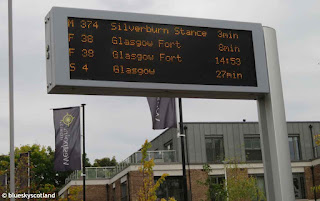ALL PHOTOS CLICK FULL SCREEN
For the last part of my Glasgow tour it's City Centre time. The first time I've arrived by train in Argyle Street. Normally I come in by bus or get off at Anderston Train Station or Central Station but I wanted to see the new hotel just off Argyle Street and this station is nearest.
I thought this was some sort of open to the general public student hub at first but it's a hotel... and a student/ business/ co working hub. A European chain but the first of its kind in Scotland and the UK apparently. Owned by a Scottish entrepreneur who grew up in Edinburgh before making his name abroad. Gets good reviews. Faces onto the Merchant City district very close to Citation. 18 social hub hotels spread across European cities so far with its HQ in Amsterdam.
On one side it looks out onto Argyle Street....
This is another part of the new build here...
And this side faces Citation, the old Glasgow courthouse and the Merchant City District with its period architecture, bars and clubs.
Like here on Buchanan Street.
and a mix of styles from Victorian sandstone to modern glass and steel.
The old buildings being full of ornate carvings so it always pays to look up.
The mural wall on Clyde Street beside the River Clyde.
I still think the overall impression of this prime city centre location is very messy with all the graffiti everywhere but the murals are good and ever changing so I'll concentrate on them instead.
Clown mural.
Female in profile.
Shades of True Detective. Season One... perhaps perhaps?
Legal Wall.... ?
Femme.
Older. "Golden Oldie...?" Fair play. Everyone 50 or over still remembers their wild youth.... now trapped within the failing body of a grumpy old git ... but still there... totally intact :) And jealous of 18 to 20 somethings whizzing quickly past without a care... so make the most of it...with sex, drugs, good music, and rock and roll... as you too will be a useless, slow, old git soon enough yourself :)
Old favourite.
Dog. Glasgow lane art.
Girl. Same Renfield Lane location as dog.
Dress Shop Mural at Charing Cross.
Same shop.
Haircut mural.
Charing Cross view.
Park Circus Towers.
Beresford Hotel in 2024.
Glasgow City Chambers side view. Merry Christmas and a Happy New Year.































































